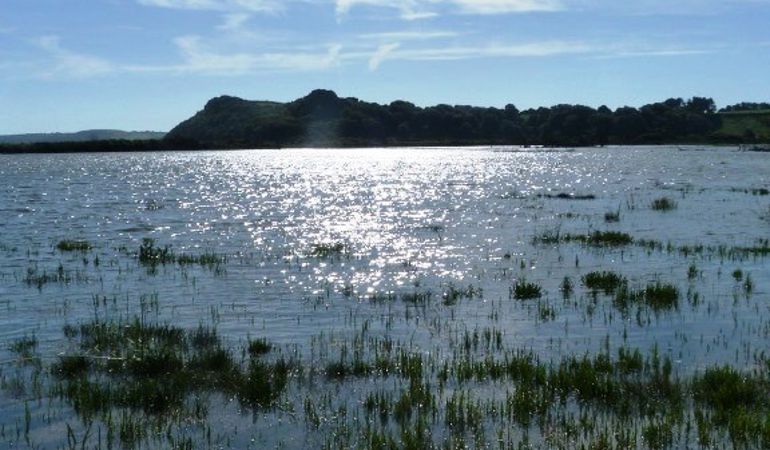Wales’ Blue Carbon offsetting and the climate emergency

Siobhan Vye, Specialist Marine Advisor tells us about the emerging role of Blue Carbon in Wales, thanks to our recent study on carbon storage potential of the seas around Wales.
Carbon storage in woodlands and peatland habitats is well-known. However, marine habitats are also important in storing “blue carbon”. Our study investigates these blue carbon habitats in Wales, from the intertidal flats of the Menai Strait and the seagrass of Porth Dinllaen, to the spindly brittle star beds off the Pembrokeshire coast and the expanses of sand and gravel covered seabed further offshore.
We know that there are likely to be serious and irreversible changes to communities in Wales as a result of climate change. Our study shows that, alongside other mitigation and adaptation measures, marine habitats can play an important part in helping us to adapt to the impacts of the climate emergency.
Welsh marine habitats, such as saltmarshes and seagrass beds, can place large amounts of carbon into long term storage each year and, in total, are as significant a store of carbon as Welsh woodlands and forests. The study reveals that, each year, the marine environment locks away carbon amounting to the equivalent annual emissions of 64,800 cars or 115,600 return flights from Cardiff to the Canary Islands.
Carbon is stored in living organisms such as seagrass and shellfish, and in non-living forms, such as in sediment on the seabed, and in the shells of marine animals. Some carbon can be locked away for generations in the seabed miles offshore, but some, like the carbon stored in seaweed, is stored for the lifetime of the plant, before being released again back into the environment.
Of all the coastal habitats looked at in the report, saltmarshes were the most efficient at taking in carbon and placing it in long term storage, a process called ‘sequestration’. Saltmarshes take in carbon dioxide from the air and surrounding water and store it in their roots and the surrounding sediments. They are also important to mitigate other climate emergency impacts, through defending the coast from storms and reducing coastal flooding. Within Wales, saltmarshes are present around the coastline and are protected in some areas such as Carmarthen Bay and Estuaries, and Pen Llyn a’r Sarnau Special Areas of Conservation.
Increasing the potential of marine habitats to store carbon is essential as part of Wales’ efforts to combat the climate emergency. Many blue carbon habitats are already protected through Wales’ extensive marine protected area network. Management of these areas aims to increase the resilience of habitats to future change and protect and enhance quality of habitats. Some blue carbon habitats in Wales have been impacted by human activities and restoring them to good condition may increase the amount of carbon they can store. NRW is also working with partners to restore blue carbon habitat at sites such as Cwm Ivy on the Gower Peninsula.
What is clear from the study is that not only is carbon storage a service provided by our woodlands and peatlands, but also that our diverse coast and sea play an important role in helping Wales tackle climate emergency and protecting our natural environment for future generations. Click here to read the report.
